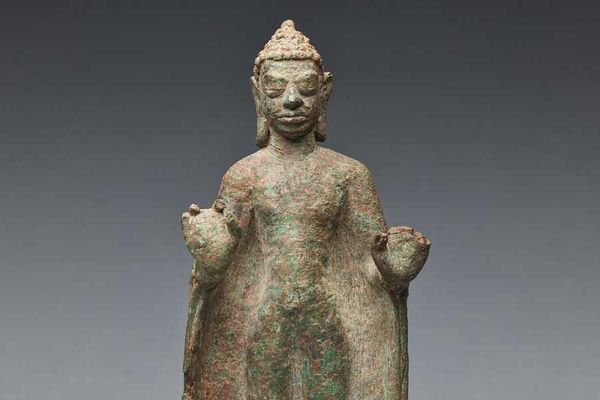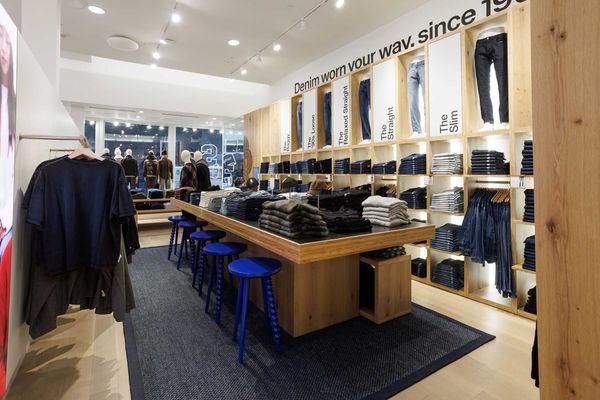Pete Docter is no stranger to success.
A 19-year veteran of Pixar’s Emeryville-based animation studio, Docter, 40, is, like so many of his similarly tenured peers, a creative force whose contributions to the company’s cinematic canon have been as indispensable as they have been varied. As an animator, he helped craft the innovative look of the studio’s first two films, Toy Story and A Bug’s Life. He co-authored Toy Story and its critically adored sequel and, more recently, helped develop the scripts for Monsters, Inc. (which he also directed) and last year’s Academy Award winner for Best Animated Feature, WALL*E.
A lanky four-time Oscar nominee who modestly describes himself as “a geeky kid from Minnesota” with an uncommon passion for drawing cartoons, Docter found himself in the director’s chair once again for Pixar’s 10th feature-length production, the high-flying 3-D fantasy Up. The movie, which debuted atop the box-office charts this past weekend after becoming the first animated film ever to open the Cannes Film Festival, takes the kind of chances most live-action adventures would not – namely, having a cranky, square-jawed 78-year-old widower, voiced by the cantankerous Ed Asner, as its hero.
Though the New York Times reported in April that Up’s merchandising prospects might be hindered by the age gap separating its crotchety, silver-haired protagonist from its youthful demographic, that was hardly a concern for Docter and co-director Bob Peterson, who also collaborated on the story. For them, the mission was as simple as the corporate mantra (“Story is king”) that has made Pixar the first name in animation: to create memorably engaging characters whose personal journeys resonate with all audiences, regardless of age.
On the origins of Carl Fredricksen, the gruff septuagenarian who flies his balloon-propelled home into the South American jungle:
Pete Docter: “Bob and I started having fun thinking about an old-man character like the ones we love from the George Booth cartoons in The New Yorker, and all those great Spencer Tracy and Walter Matthau type of guys who are grouchy but you still like them. We came up with this image of a floating house held aloft by balloons, and it just seemed to capture what we were after in terms of escaping the world. We quickly realized that the world is really about relationships, and that’s what Carl comes to discover.”
Bob Peterson: “We both love our grandpas, for one thing. But it was Pete who first put down on paper the idea of a grouchy old man holding a bunch of fun, colorful balloons – he sketched this character, the sourest man in the world holding the world’s happiest balloons. So really it began with that drawing. We started brainstorming because we both liked the idea of having an older character. It’s something you don’t see very often, and we think that old people have great stories to tell.”
On casting Ed Asner, the 79-year-old former star of The Mary Tyler Moore Show and Lou Grant, as Carl:
PD: “When we were coming up for the character of Carl we had this list of attributes that we wanted him to be – grouchy, curmudgeonly – but with a soft side so that you knew he really cared about people. And funny. We definitely needed him to be funny. And the name that just kept coming up again and again was Ed Asner. It was like he was born to play this role.”
Ed Asner: “Carl is a bit of a curmudgeon, which is why they cast me. I’m supposedly recognized as such, but I don’t know how I ever got there. Carl just wants to be left alone, but [Russell, his eight-year-old friend and flying companion] brings him out of his shell. Circumstances bring him out and he has a rebirth. I think all curmudgeons should have a rebirth.”
Asner, on his familiarity with Pixar and Carl's appeal:
EA: “I’ve seen Ratatouille, WALL*E and pieces of Toy Story every time I go over to my daughter’s house. That’s all the grandkids ever have on! But I was shocked at the adult thrust of these movies. I was amazed this was animation, and I was just as amazed to see Pete and Bob invest that same kind of intelligence into Up. These are bright guys. They come up with the stories, they have the talent to create the artwork, and they had the ultimate wisdom to cast me.”
BP: "Well, we're all children of media to some extent, and we grew up watching Ed on TV. He's one of our comedy heroes, and we learned a lot from his timing. So it was only natural that we'd want him to be a part of this."
EA: "You'd be amazed by how many people grew up having those same experiences you did, and they wouldn’t want to touch me. But as I said, these guys are smart. And I was tremendously impressed by Carl’s story. I like this character because he dreams beautiful dreams, and he’s willing to fight the dogs of society to maintain them. I respect that enormously. I think it’s quite a story that this old man is able to transform his adoration for his late wife into a grudging final acceptance of a love for a young boy who needs his love. The film has something to say about celebrating life, and the union of two souls is always much sweeter than the isolation of one."
On the decision to make Up the first 3-D adventure in Pixar’s brief but illustrious history:
Jonas Rivera, Producer: We started off with Up as a 2-D production, and [Pixar chief creative officer] John Lasseter came to us after seeing some of the stuff Disney was doing with Bolt. John’s always loved 3-D, and we’ve done some of our short-length films in 3-D, and he really thought this was the one, a movie whose visual style would be a great fit with the 3-D format.
PD: “We set up a whole separate division. This new department took a lot of the same storytelling elements that we were using and tried to use depth as another way of telling that story. At the beginning of the film, for example, Carl is stuck in his ways and he’s living in this little house. We wanted it to feel claustrophobic so we flattened everything – we made it purposely less deep. Contrast that later when he gets to South America. We wanted this expansiveness, and we wanted you to feel the wind in your face, so we really pushed depth there. We look at 3-D as another crayon in our crayon box.”
JR: “All of our films are 3-D in the computer, so this is nothing entirely new for us. Our biggest concern was that we didn’t want to have things jumping out at the audience. We didn’t want to treat 3-D as a gimmick. Our job is to make the audience forget they’re at the movies as opposed to reminding them, so we treated the screen like a window looking in, like a diorama. We used it as a storytelling device, which was very important to us.”
On the secret of Pixar’s continued success:
PD: “For me personally, what makes a film worth watching is when you go home and you’re still thinking about it. You leave the theater and you’re still thinking about it not only the next day, but the next year. In order to have a film affect you that way, it has to have true emotion and resonate in some way with your own life. So even though the stars of the film may be monsters or bugs, you identify with those characters on the screen and you understand what they’re going through. It’s important to have that foundation of real truth and an emotional attachment to the characters. We understand that here.”
BP: “The thing about this place is they let each director create kind of an autobiography of himself on the screen, just as a painter would with a self-portrait. Whether it’s Pete, Andrew Stanton, Brad Bird, John Lasseter or even myself, they allow us to throw something up on the screen and work with it through the years, and then pass it by great eyes and ears – gatekeepers of quality who are not involved with the project firsthand but still have great notes to guide you. These movies aren’t designed by committee, but there is a very smart committee in place to help us tell the stories we want to tell.”
PD: “It never gets easier. We still don’t know everything. But we allow ourselves to make mistakes. As [Pixar president] Ed Catmull says, ‘If you don’t make mistakes, you’re not taking enough risks.’ I hope we never think of ourselves as experts. We learn something new on every film.”
To read more about Up and its exceptional artwork, click here. A 30-percent discount and free ground shipping is available to those who enter the promo code UP at checkout.


















